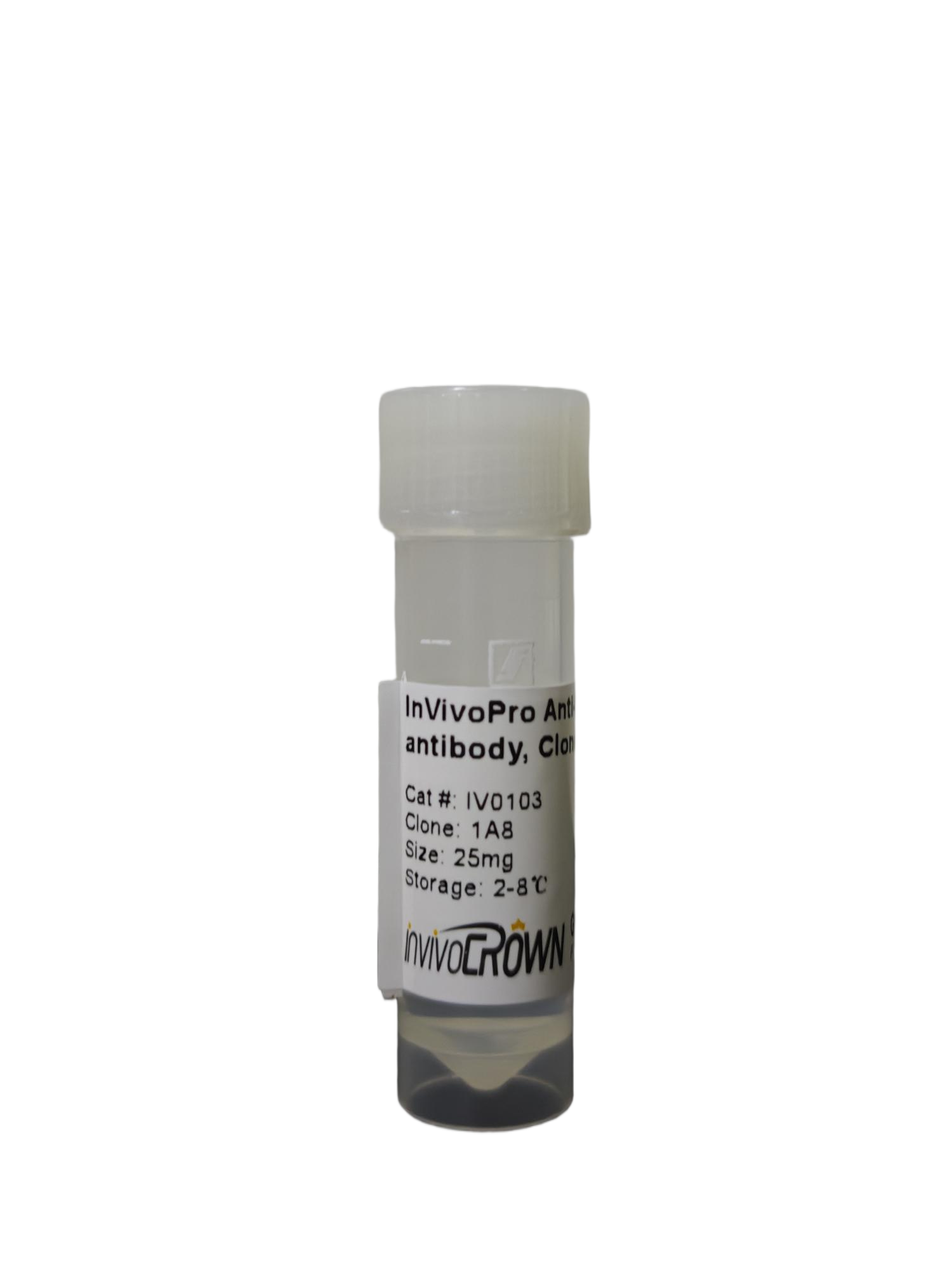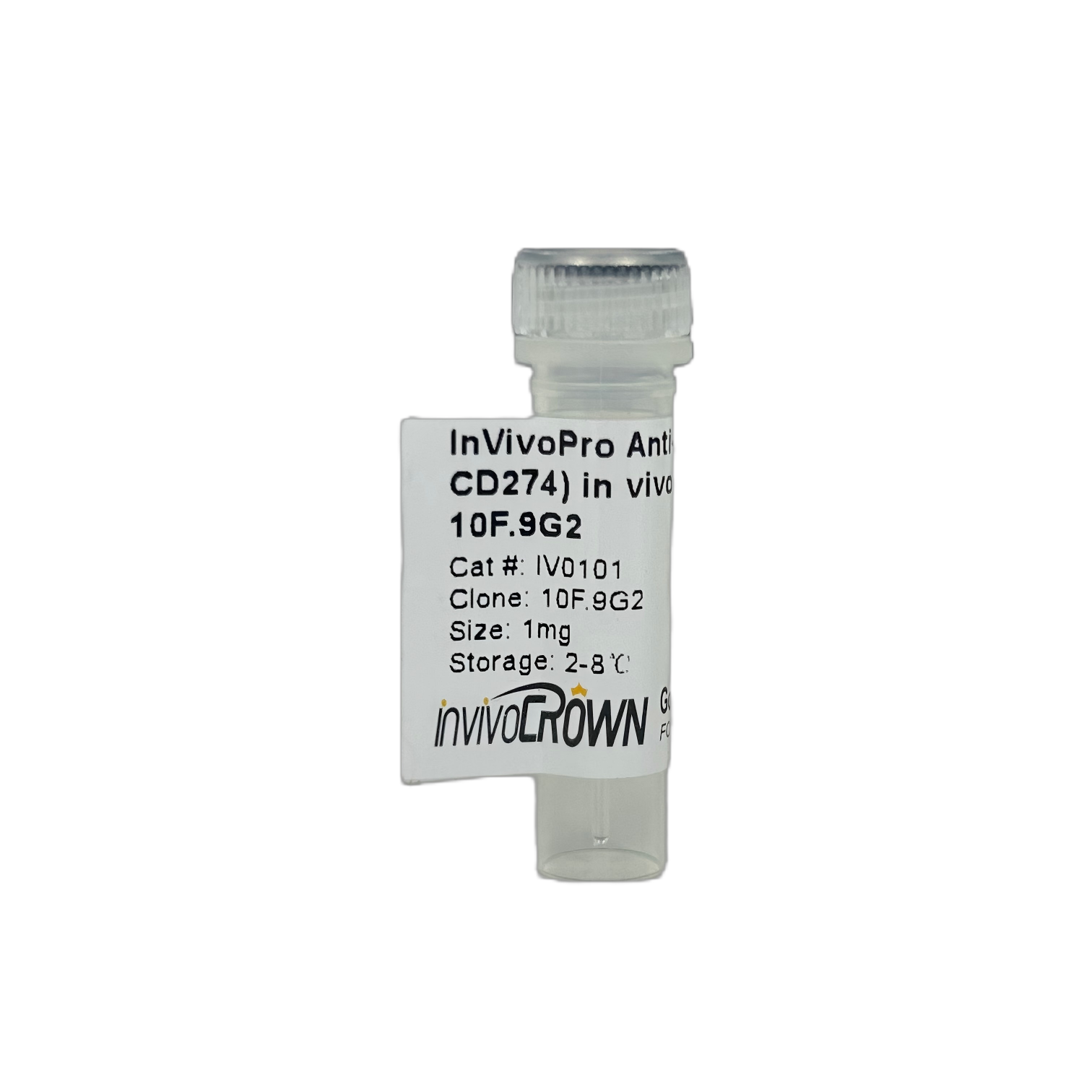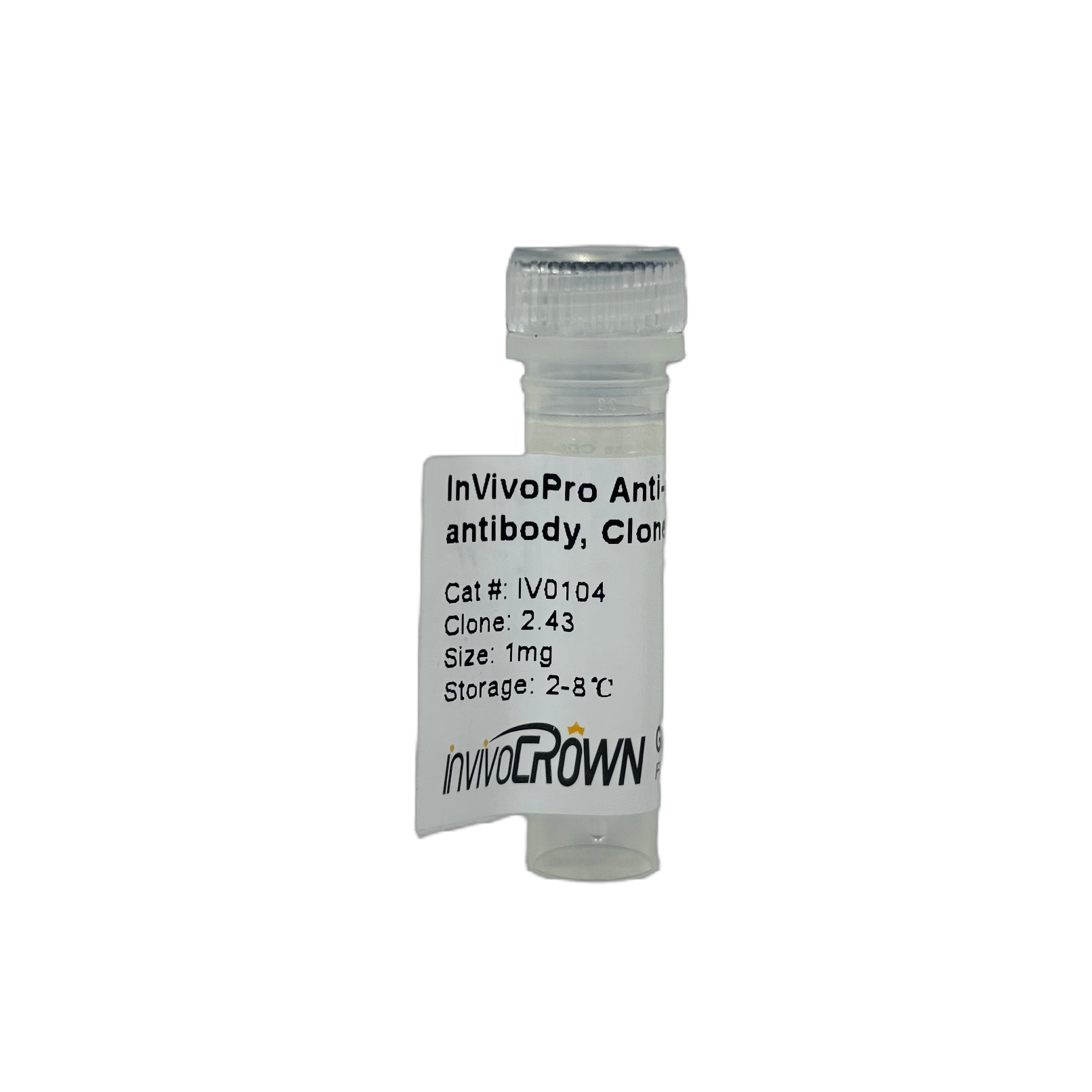| Catalog |
IV0100 |
| Product Name |
InVivoPro Anti-Mouse PD-1(CD279) in vivo antibody, Clone RMP1-14 |
| Size |
1mg/5mg/25mg/50mg/100mg |
| Isotype |
Rat IgG2a κ |
| Clone |
RMP1-14 |
| Target |
PD-1 |
| Other Names |
Programmed Death-1, CD279, PD-1 |
| Isotype Control Catalog Code |
IV0105 or Rat IgG2a Isotype Control |
| Dilution Buffer |
PBS, pH 7.2, contains no stabilizers or preservatives |
| Reactivity |
Mouse |
| Host Species |
Rat |
| How much antibody to use in vivo |
200-500 μg per mouse; or 10 mg/kg. This range is based off the most recent publication data using the RMP1-14 clone in vivo. Each investigator should determine their own optimal working dilution for specific applications. |
| Background |
CD279, also known as programmed death-1 (PD-1) is a 50-55 kD immunoglobulin superfamily member. PD-1 is expressed on a subset of CD4-CD8- thymocytes, and on activated T and B cells. The PD-1 ligands, PD-L1 (also known as B7-H1) and PD-L2 (B7-DC), are members of the B7 immunoglobulin superfamily. This RMP1-14 antibody has been reported to block the binding of PD-1 to its ligands (B7-H1 and B7-DC) and to inhibit T cell proliferation and cytokine production. |
| Applications |
In vivo blocking of PD-1/PD-L1 signaling |
| Purification |
protein A or G |
| Storage |
This antibody is stable for at least 2 months when stored at 2-8°C. For long term storage, aliquot in working volumes without diluting and store at -20°C or -80°C. Avoid repeated freeze thaw cycles. |
| Shipping |
2-8°C with blue ice |
| Concentration |
Lot specific, generally ≥ 5.0 mg/ml |
| Shelf Life |
12 months from the date of receipt if stored as recommended |
| Formulation |
PBS Buffer, PH 7.2, with no carrier protein, or preservatives. |
| Sterility |
0.2 μM filtered |
| Endotoxin |
≤ 1.0 EU/mg, by the LAL method |
| Purity |
99% |





